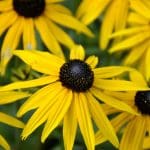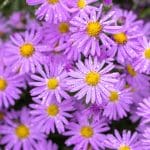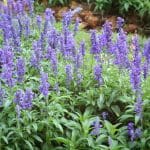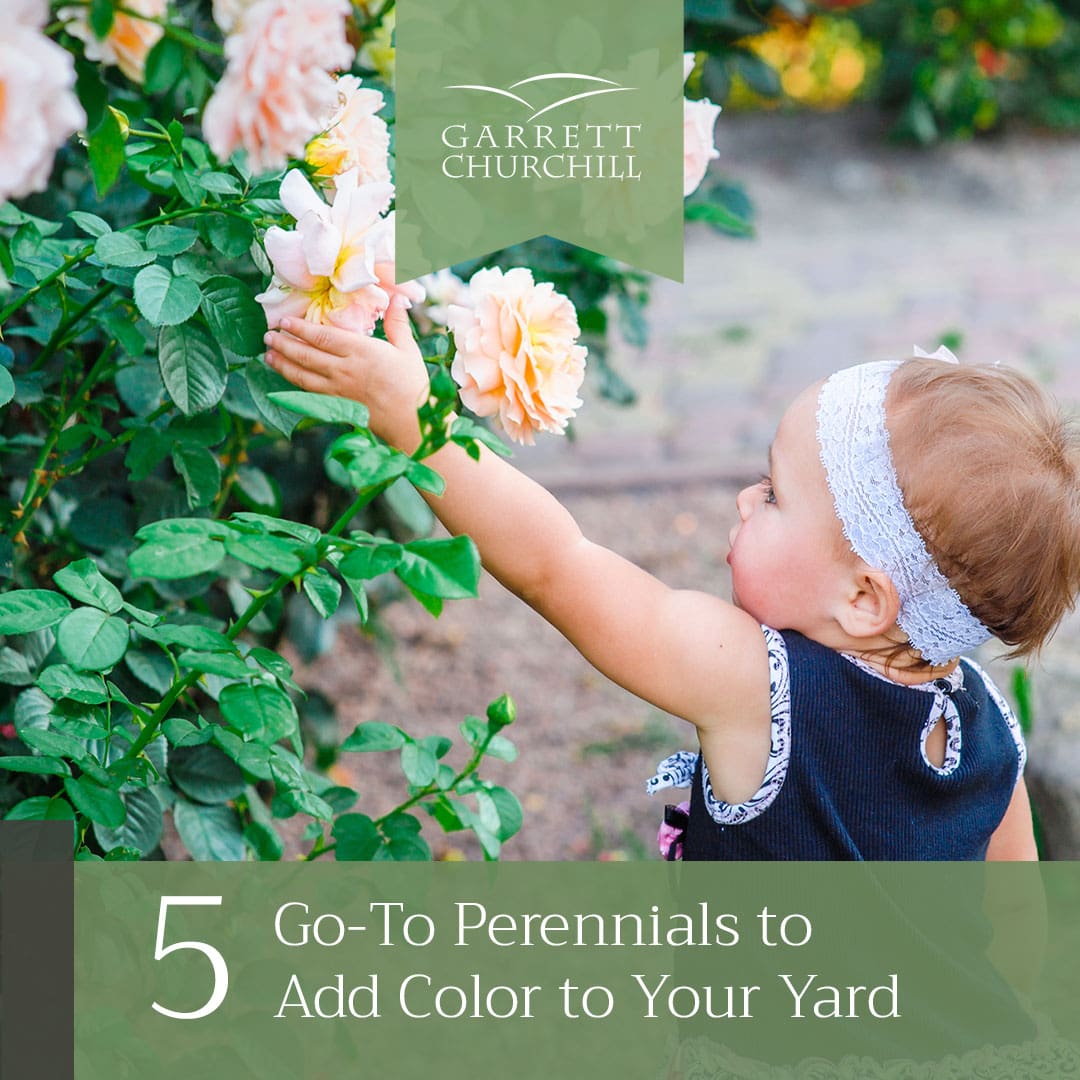Five Go-To Perennials to Add Color to Your Yard
Pops of color can enhance the aesthetic appeal and visual interest of your home’s exterior. With the right plant choices, you can curate a landscape that not only reflects your unique personal style but also brings the added advantage of returning year after year.
Read on to explore five perennials that can transform a plain outdoor space into a kaleidoscope of vibrant color.
1. Black-Eyed Susan
 Variety is essential to cultivating an exciting landscape, and you can find it in the wide range of colors the black-eyed Susan offers. The “black eye” refers to the flower’s dark center, giving it a look similar to a daisy.
Variety is essential to cultivating an exciting landscape, and you can find it in the wide range of colors the black-eyed Susan offers. The “black eye” refers to the flower’s dark center, giving it a look similar to a daisy.
This flower dons rich, warm tones anywhere from bright oranges to dark reds, but the more lemon or gold colors are the most common. You can find these perennials throughout North America, and they’ll do well in most climates.
Black-eyed Susans need full sunshine to grow to its utmost potential. They attract pollinators, but deer and rabbits often pass them by for what they consider tastier options. The best variety for landscaping is the more disease-resistant varieties.
It’s also worth noting that not all varieties are perennials, so make sure you’re checking before you plant them in your yard.
2. Aster
 Asters bloom in explosive clusters of ethereal purples, pink, and blue, making them a perfect accent flower for a large garden. They’re also easy to grow and attract pollinator insects and small finches.
Asters bloom in explosive clusters of ethereal purples, pink, and blue, making them a perfect accent flower for a large garden. They’re also easy to grow and attract pollinator insects and small finches.
The New England aster or the New York aster are the two more common varieties, as they’re native North American plants. New England asters are usually larger and typically present in purple hues, while the New York asters are smaller and have an impressive selection of colors you can choose.
If you’re looking for a durable perennial that can add any color accent to your yard, all the aster needs is enough full sun, and it’s good to grow.
3. Echinacea
 You may have heard of echinacea because of its medicinal ties, as it’s often used in cold remedies and for immune system support.
You may have heard of echinacea because of its medicinal ties, as it’s often used in cold remedies and for immune system support.
Echinacea is a group of flowering plants also known as coneflowers. Coneflowers look similar to Black-eyed Susans but with their petals growing downward. They also come in a diverse palette of colors, spanning most of the rainbow, with some varieties even having green flowers.
Also a full sun fan, coneflowers are one of the great American wildflowers, blooming nationwide. Their ability to adapt to multiple climates makes them the perfect fit for most gardeners, and they’ll also attract beautiful fauna like goldfinches and butterflies.
4. Allium Millennium
 Allium millenniums, with their distinctive spherical globes composed of numerous small star-shaped flowers, are a must-have for gardeners seeking a unique and enduring addition to their outdoor spaces. What sets Allium millennium apart is its long blooming period, providing weeks of continuous beauty from late spring to early summer.
Allium millenniums, with their distinctive spherical globes composed of numerous small star-shaped flowers, are a must-have for gardeners seeking a unique and enduring addition to their outdoor spaces. What sets Allium millennium apart is its long blooming period, providing weeks of continuous beauty from late spring to early summer.
These plants are low-maintenance and highly adaptable, thriving in various soil types and tolerating both full sun and partial shade. Thanks to their classification as part of the onion family, gardeners can enjoy peace of mind knowing that wildlife almost always leaves Allium millennium alone.
5. Salvia

Salvia, also known as sage, is a versatile plant that can bring a multitude of benefits to your garden. With its attractive foliage and stunning blooms, salvia adds both beauty and texture to any landscape. Whether you choose the vibrant red, purple, or blue varieties, these colorful flowers will impart eye-catching color to your yard.
Salvia is a favorite among pollinators, attracting bees, butterflies, and hummingbirds, thus contributing to the overall health and biodiversity of your garden. Another advantage of salvia is its ability to thrive in different climates and soil conditions, making it a resilient and low-maintenance plant for gardeners.
Plant your salvias in areas with plenty of sunlight and well-draining soil for the best results. They can thrive in the shade, although their flowering will be less impressive.
Design Your Ideal Outdoor Space with Garrett Churchill
By choosing hardy, colorful perennial flowers, you can add vibrant interest to your yard that you can enjoy for years to come.
With over 23 years of landscaping experience, our team can help make your dream a reality. Contact us to get a quote and learn more.
